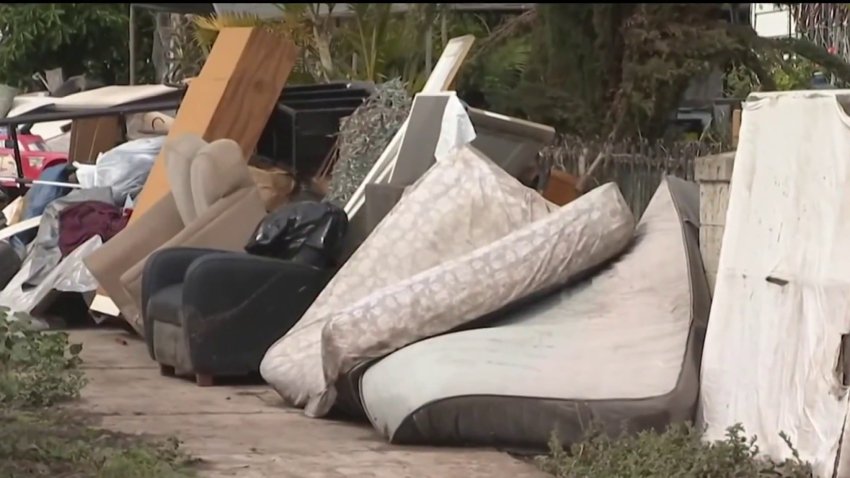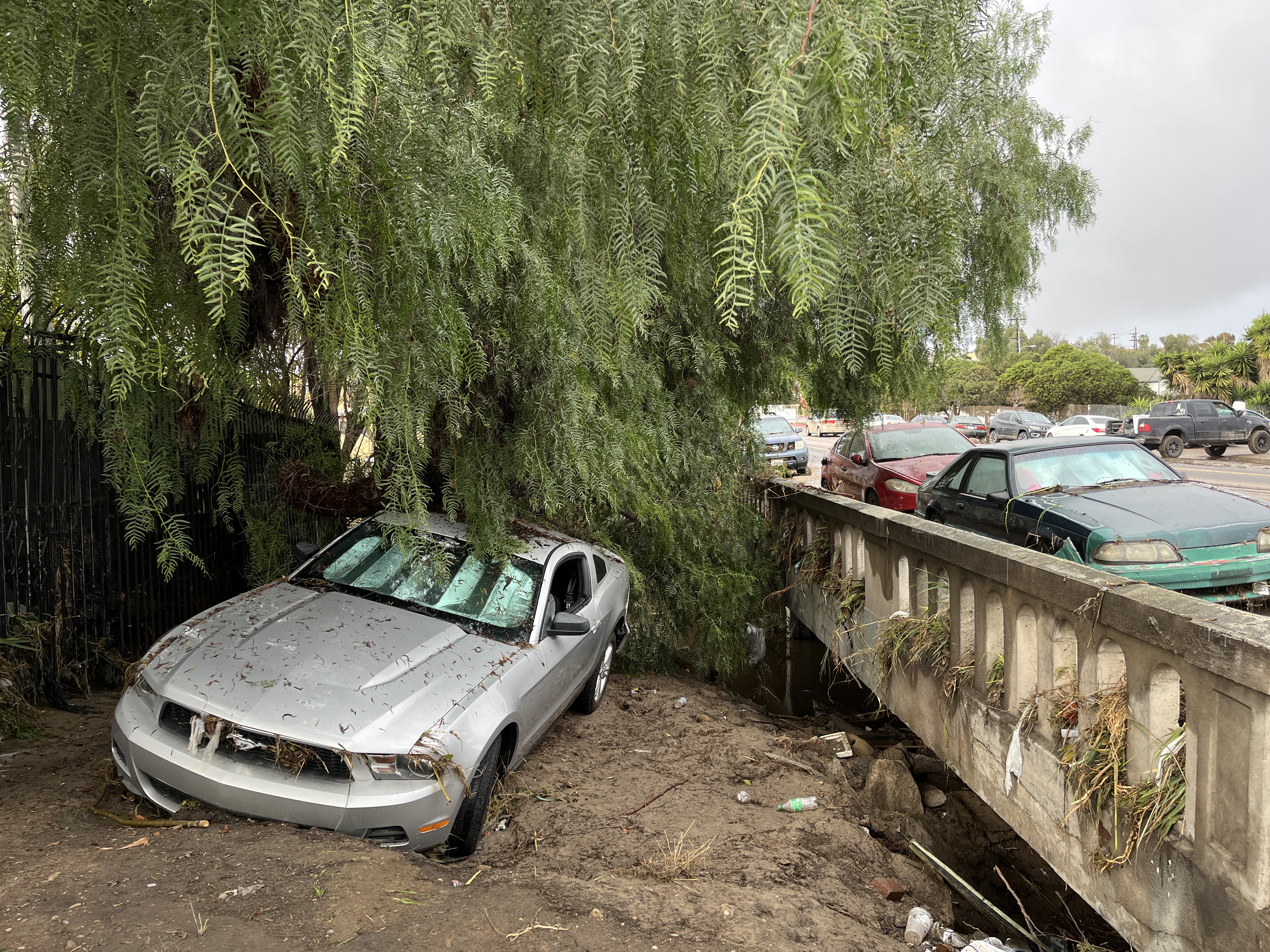When you consider the nearly half a million people that live in the San Diego River watershed stretching all the way to Lakeside, the potential amount of bacteria and toxic debris is huge. And if ingested by animals, or even humans, it can affect our health and environment.
But there are groups actively working to prevent this and cleaning up what they can in the aftermath of a storm like Monday’s historic rain event.
Relevant content:
The San Diego River often floods and overruns the Mission Valley streets surrounding it.
Get top local stories in San Diego delivered to you every morning. Sign up for NBC San Diego's News Headlines newsletter.
Sarah Hutmacher has worked for 15 years to prevent and restore the river through the San Diego River Park Foundation. Volunteers and employees monitor the river and clear out trash and even non-native plant species that can choke up the channel way that cause more flooding.
She said Monday's storm wasn’t too different for the San Diego River. But across the county, the impact was severe.
“The magnitude of the storm and the duration, how quickly all that rain fell surprised even the forecasters. The models are not perfect,” Hutmacher said.
Reaching more neighborhoods and roads, washing chemicals, pet waste, fertilizer, sewage leaks and more, into other waterways like Chollas Creek that flows through many communities in southeast San Diego.
“I think throughout San Diego, you can see examples where the land use channeled what used to be big, wide flood plains into very narrow little stretches of river,” Hutmacher said.
Over time, development covers and shrinks the watershed. But just like Chollas Creek, the San Diego River is also under restoration, in an effort to bring back native species of animals and plants.
“The presence of these kind of species can actually help with flooding,” Hutmacher said.
More native plant species, in essence, can give water more space to move and soak up. Some trees even bend to let the water through, and if uprooted can re-sprout elsewhere.
But when storms like Monday's hit, there's definitely a setback. Visually, it’s easy to see the trash piles and debris in the water that flowed from nearby communities.
“With those people comes you know fertilizers, pollution from their vehicles. There comes soaps and bacteria from pet waste," Hutmacher said. "All that stuff eventually washes into the San Diego River.”
And that can harm the wildlife and humans if ingested. Waterways are restored across San Diego, not just for native species, but for recreation too.
Hutmacher said it’s not all bad though. The storms also benefit the waterways. They scour decomposing sediment from the bottom of the river, introducing more oxygen and fresh water too.
It may not be the easiest to focus on when historic flooding in San Diego left communities devastated and picking up the pieces.
“It’s not like there’s one spot where we can go fix a problem and solve it. It’s that its coming a little bit from everywhere, which just means the solution is going to take everybody working toward trying to do their part,” Hutmacher said.
NBC 7 reached out to the County of San Diego about how they approach storm clean up and prevention.
Through their Stormwater Prevention program, trash capture devices are placed at various locations.
County crews also clear culverts, remove downed trees and debris though public works. And the Beach and Bay Program tests and report on the quality of water recreation areas.




